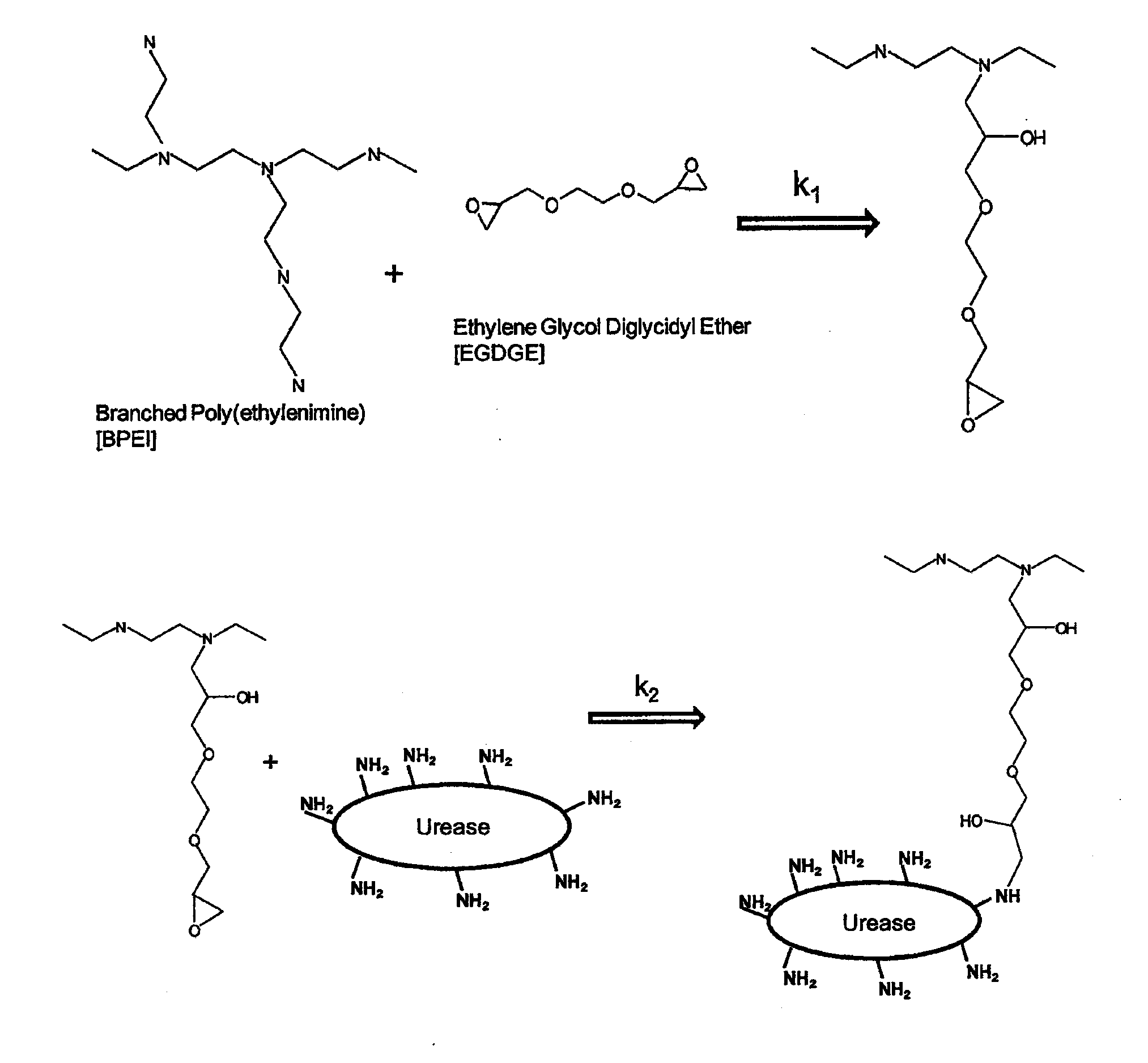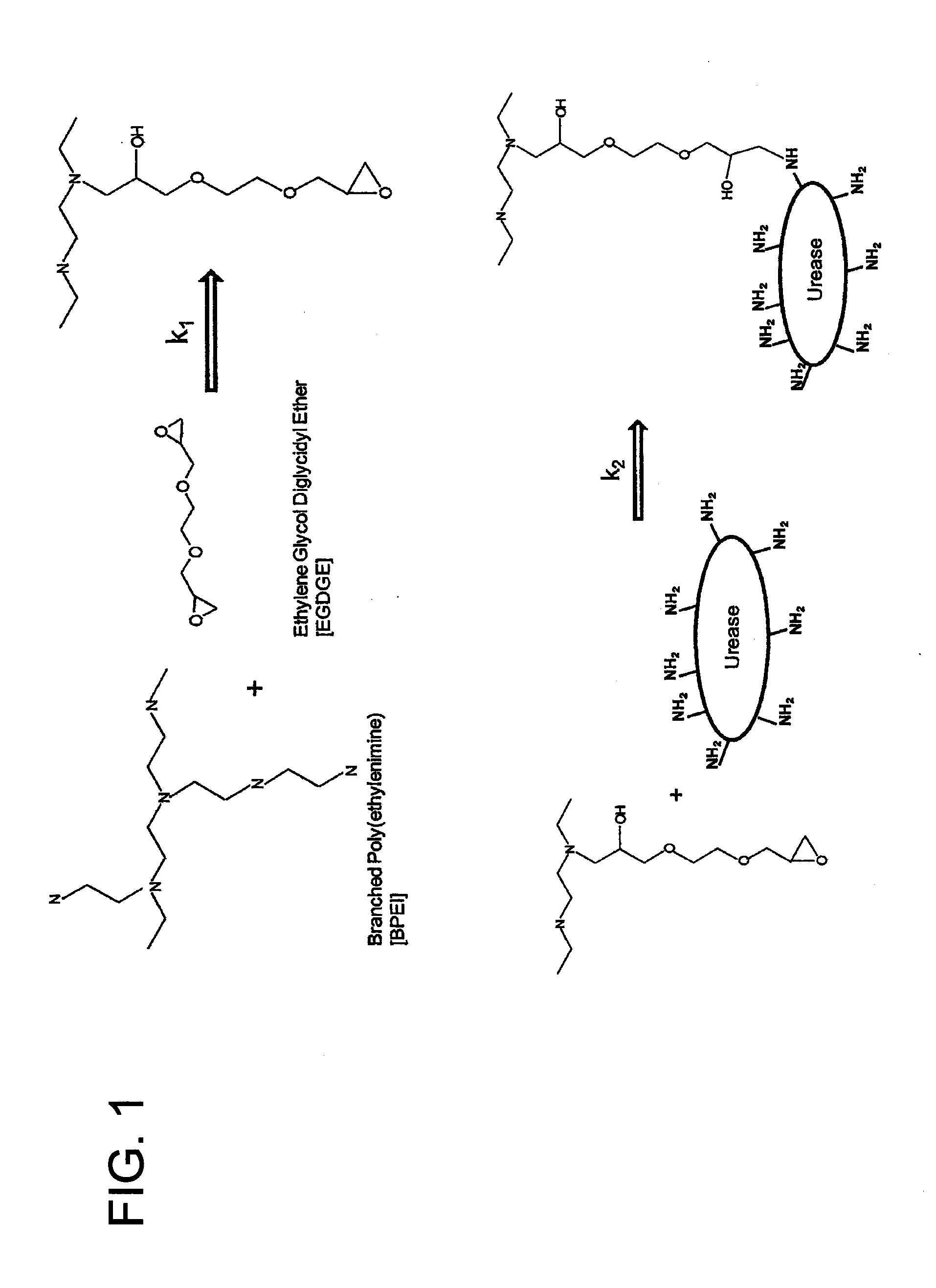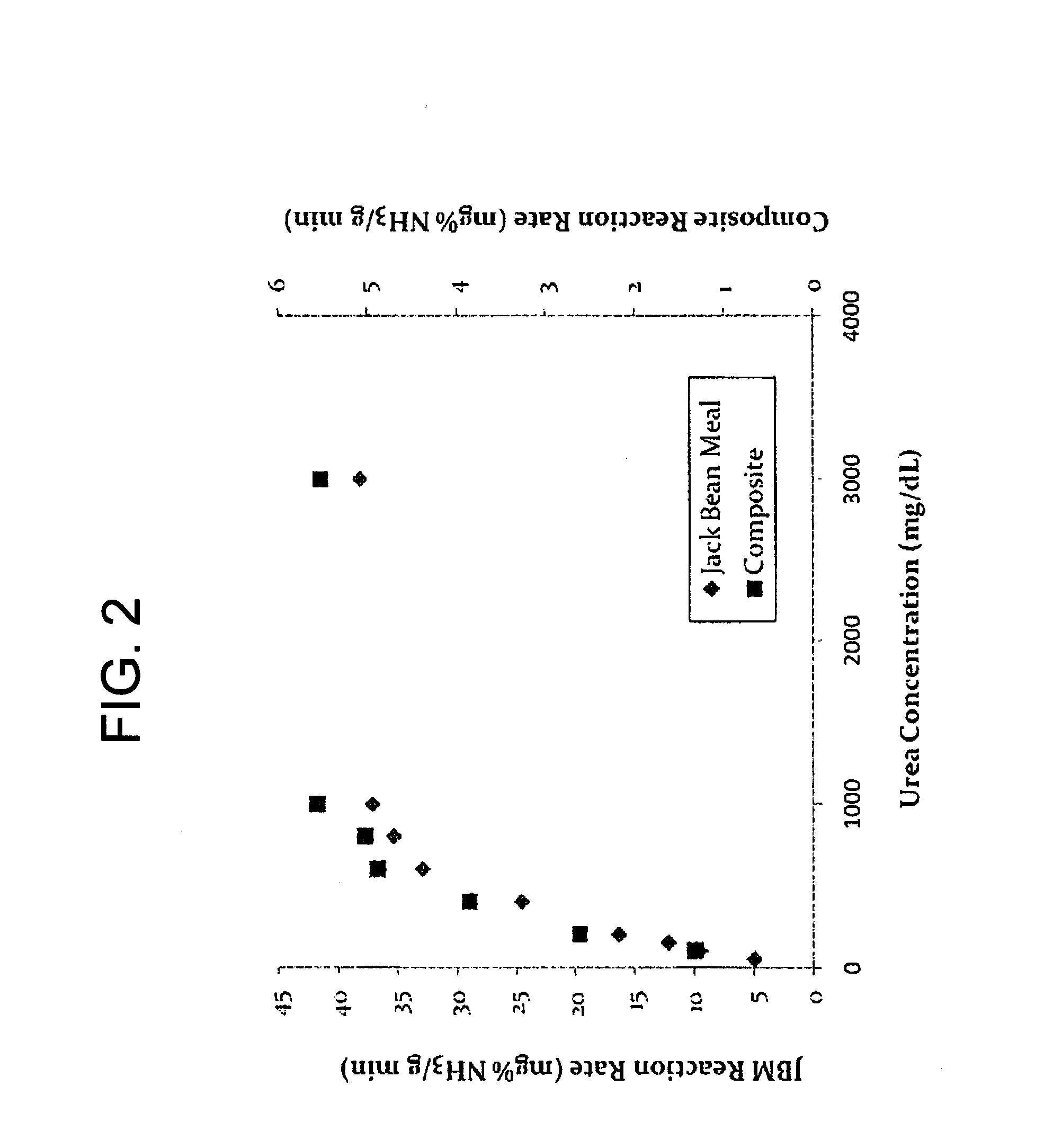Covalently Immobilized Enzyme and Method To Make The Same
a covalent immobilization and enzyme technology, applied in the field of immobilization of enzymes, can solve the problems of reducing the biocatalytic capacity of enzymes, affecting the stability of enzyme crosslinking products, and affecting the stability of enzymes,
- Summary
- Abstract
- Description
- Claims
- Application Information
AI Technical Summary
Benefits of technology
Problems solved by technology
Method used
Image
Examples
example 1
Preparation of BPEI / EGDGE / Urease / Carbon composition with 10% crosslink density (Batch 15).
[0079]Ten (10) g BPEI were dissolved in 25 mL of 5 M HCl by adding the acid very slowly (dropwise) onto the stirring polymer. This took about 30-45 min. Once all acid was added, the polymer solution was allowed to stir until cooled to room temperature. This took about 10 min.
[0080]Fifteen (15) g of Jack Bean Meal (JBM) were blended with 5 g of activated carbon powder. This blend was then added to the cooled polymer solution and stirred. At a certain point, the magnetic stirrer was not strong enough to stir. The mixture was then stirred vigorously with a spatula as a whisk.
[0081]Once homogenous, 1.75 mL of EGDGE (TCI America, Polysciences, SPI Supplies) was added. A common name for this crosslinker is Quetol 651. Using the spatula, the mixture was again mixed vigorously.
[0082]The mixture was then poured onto a non-stick surface (i.e., a plastic bucket lid) and allowed to cure for approximately 3...
example 2
Preparation of BPEI / EGDGE / Urease / Carbon composition with 20% crosslink density (Batch 13).
[0090]The batch preparation of Example 1 was followed using 3.5 mL EGDGE. The crosslink density was calculated to be approximately 20%.
Standards123avgstdev100.3270.3210.3220.3230.0042150.4890.4910.4950.4920.0014200.660.6660.6610.6620.0042
123avgstdevBatch 131.5481.5841.5631.5650.0180[0091]mg % NH3 in Batch 13 Samples: 46.88[0092]Activity of Material: 23.44 SU / g[0093]Absorbance at 635 nm.
example 3
Preparation of BPEI / EGDGE / Urease / Carbon composition with 40% crosslink density (Batch 11).
[0094]The batch preparation of Example 1 was followed using 7 mL EGDGE. The crosslink density was calculated to be approximately 40%.
Standards123avgStdev100.3140.3060.3120.310.0057150.4910.4920.4940.4920.0007200.6320.6710.6760.6520.0276
123avgStdevBatch 110.4690.4620.4680.4660.0038[0095]mg % NH3 in Batch 13 Samples: 14.51[0096]Activity of Material: 7.25 SU / g[0097]Absorbance at 635 nm.
PUM
| Property | Measurement | Unit |
|---|---|---|
| particle size | aaaaa | aaaaa |
| particle size | aaaaa | aaaaa |
| particle size | aaaaa | aaaaa |
Abstract
Description
Claims
Application Information
 Login to View More
Login to View More - R&D
- Intellectual Property
- Life Sciences
- Materials
- Tech Scout
- Unparalleled Data Quality
- Higher Quality Content
- 60% Fewer Hallucinations
Browse by: Latest US Patents, China's latest patents, Technical Efficacy Thesaurus, Application Domain, Technology Topic, Popular Technical Reports.
© 2025 PatSnap. All rights reserved.Legal|Privacy policy|Modern Slavery Act Transparency Statement|Sitemap|About US| Contact US: help@patsnap.com



